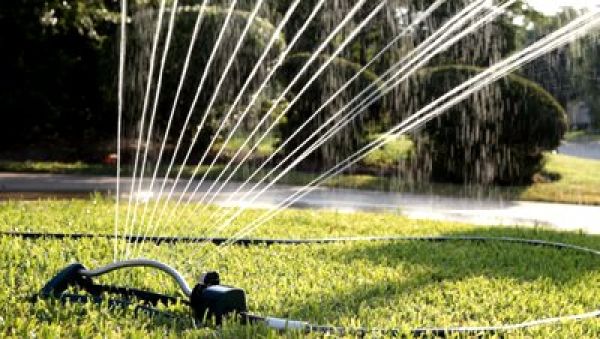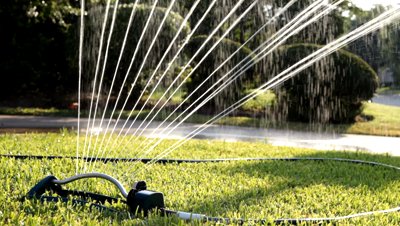
Water: Don’t Waste a Drop!
 In McHenry County, water is all around us: Groundwater. Wetlands. Watersheds. Stormwater. Even so, all of the water people use locally comes from the ground. Municipal and private wells reach down into “groundwater aquifers” and pump water up for human use.
In McHenry County, water is all around us: Groundwater. Wetlands. Watersheds. Stormwater. Even so, all of the water people use locally comes from the ground. Municipal and private wells reach down into “groundwater aquifers” and pump water up for human use.
Aquifers are not underground pools. In this area, aquifers are found where deposits of sand, gravel, or sandstone have water filling the spaces between sand particles (or filling cracks in the rock). The water in the aquifers starts out on the surface and slowly works its way down to the porous material where wells can access it for pumping back to the surface.
Sand and gravel aquifers are found 10 to 400 feet below the surface in deposits left by the glaciers 12,000 or more years ago. It can take water up to 50 years to reach these aquifers depending on how close the sand and gravel is to the surface.
Sandstone aquifers are up to 1,300 feet (one-quarter mile) below the surface. Sandstone formations are the remnants of ancient sea beds that were compressed into stone over millenia. Water from the surface may take hundreds or thousands of years to reach the sandstone. Note: the water moving into sandstone aquifers under McHenry County is believed to come primarily from Boone County.
Here are some important things to know about the water under McHenry County:
– Most of the available water is in the shallow sand and gravel aquifers. But, that water is more susceptible to contamination because pollutants from the surface will reach it sooner or later. Note: The communities of Fox River Grove and Crystal Lake had to issue advisories to residents in recent years because of elevated levels of chemicals in their shallow wells. And more than 10 years ago, the City of Harvard had to close a shallow well because of chemical contamination.
– Water in the sandstone aquifers is less likely to become polluted, but there is also much less of it. Also, McHenry County municipalities are already withdrawing more water from deep wells each year than is filtering back into them. So, they will run dry one day.
The good news is that McHenry County has enough water to meet current and future water needs with the water resources that are available to us right beneath our feet – if we plan for it. Planning includes protecting the water quality in our shallow sand and gravel aquifers to be sure that this resource is available for future generations too. Preserving the ability of the land to allow water to soak in so the aquifers can be recharged is critical as well.
There are some simple things that residents can do to help ensure there are ample water resources for the future:
– Stop treating stormwater as a waste product that is sent “away” as quickly as possible. Slow it down. Let it soak into the ground to recharge aquifers instead.
– Use native plants for landscaping. Water use peaks in the summer when residents water their lawns and gardens to keep them lush. Many native plants are drought tolerant once established. They also have the added benefits of reducing stormwater runoff and increasing infiltration.
– Let lawns go dormant during the hot, dry days of summer.
– Preserve open land and farmland that allows water to soak into the ground.